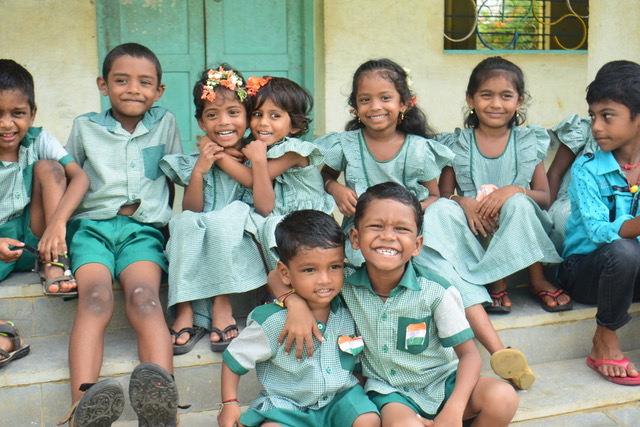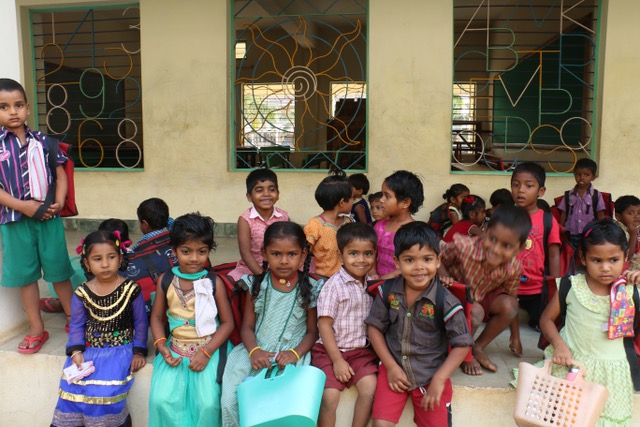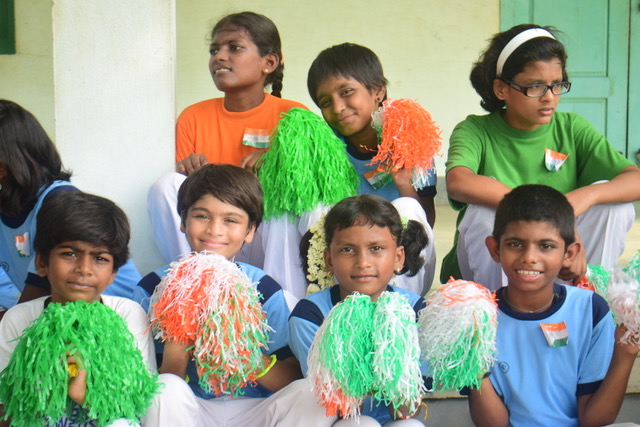Care&Share has been involved in the rescue and rehabilitation of street children since 1995. We first began with supporting Happy Home – a Home for street boys. In 1996 we set up Sweet Home, our Rescue Home for boys. In November 1997 we set up Ginny’s Home – a Rescue home for girls – and in March 1999 we started Toti’s Home, our second Home for young girls. In May 1999, we started building Daddy’s Home, a permanent residence for destitute children. In 2005, we began construction at Butterfly Hill, our new campus for street children.
Street Kids
Finding a Family & Home

Tens of millions of children live in the streets of cities scattered all over the world. Their presence may be noticed in developed as well as in developing countries, but the majority live in the poor nations of Africa, Asia, and Latin America. According to Unicef and the World Health Organization (WHO), the steadily growing number of street children worldwide could be comprised between 100 and 150 million. India has the highest concentration.
India is home to millions of indigent children. Many of them live in neglect with families who cannot take care of them. Millions more are forced into the work force at the time they should be learning how to read. Millions still live in the streets as a result of the loss of their loved ones, the breakdown of their families, or simply because they no longer could endure the abuses inflicted upon them by parents, relatives, and employers. In 1994, Unicef estimated that 11 million children lived in the streets of India, while other
groups put the number as high as 18 million. While some children are lured to the streets by the exciting prospect of being completely free, most are driven there by despair. In most cases, they simply have nowhere else to go.
Many end up at the train station, where some look for work while others become vagabonds, criss-crossing the country on its vast and intricate railway network. They live miserably. They endure constant hunger and malnutrition, which are often accompanied by scabies and dysentery. On the streets, they may be found working a variety of jobs: they sell food and drinks on trains and railway platforms; they clean train compartments; they collect plastic, aluminium, paper, and anything else they may be able to resell; they serve as paperboys, shoeshiners, dishwashers, or porters for hotels and local businesses; they play music, juggle, or simply beg. Their lifestyle exposes them to the many grave risks that derive from their frequent involvement in drug trafficking, organ trade, prostitution, pornography, and slavery.

In Vijayawada, a 1989 report by Unicef estimated the number of street children to be 19,800. Such figure includes those who live in the streets or railway station, those who are orphans and homeless, and those from the surrounding slums who work/roam in the streets. The Forum for Child Rights estimates that an average of 33 children arrive at the Vijayawada railway station every day. The typical street kid is a male between 11 and 13 years of age; a majority of them hail from other towns and villages within Andhra; most are Hindu and belong to castes that the government designated as “backward”.
Many street children are driven out of their homes by poverty and abuse: ill treatment by parents, a step-father or step- mother who is hostile to the child, a broken home, a father who is out of work or who is an alcoholic or drug addict. All these kids are attracted by the glamour of the town – the big houses, cinema theatres, hotels and restaurants – quite different from the fields and huts of the villages. They flock to the town hoping to have a better life. Once there, they easily pick up small jobs and their initial earnings make them complacent. With a little money in their pocket for a meal, a pack of cigarettes and a movie, they feel like adults. But not for long. Soon, they fall prey to middle men and gangs and are often caught up in a life of crime and violence. Some of them are deliberately maimed and mutilated.
Street kids are also constantly exposed to the elements – sun, rain and cold. The streets are places of filth and dirt. Sleeping on the roads and railway platforms with a newspaper for a bed, eating at way-side stalls or leftovers from the garbage bins of the hotels exposes them to all kinds of infection and disease. They live amidst dirt, smoke and other environmental hazards and hence are prone to all kinds of illness. Their health is generally poor and many suffer from chronic diseases like asthma, dysentery, scabies, recurring malaria and typhoid. Many are suffering from TB, STD, Hepatitis and AIDS. According to the United Nations, one-half of Vijayawada’s street children have a sexually transmitted disease or infection. If the situation of the boys is bad, it is much worse for the girls. All of them are sexually abused and if not rescued usually end up in a brothel. They all have tales to tell of being beaten, drugged and sold. Many girls we have rescued have been found to be suffering from venereal diseases.

Our rescue and rehabilitation program serves the needs of these children. They must be provided with a Home, food, clothing and medical aid. They need a basic education and some vocational training. The education and training we give them aims to make them literate, to equip them with some skills to find employment or to start work on their own and thus make a livelihood for themselves. Our objectives, nonetheless, go far beyond providing the assistance that simply allows them to fight another day. Our mission is to transform the lives of these children, return them the ability to dream, provide them with the means, the confidence, and the self-image they need to fully realize their potential, and help them bloom into healthy, self-reliant individuals. Once their most basic needs are satisfied, their full rehabilitation requires that we give them their childhood back.
